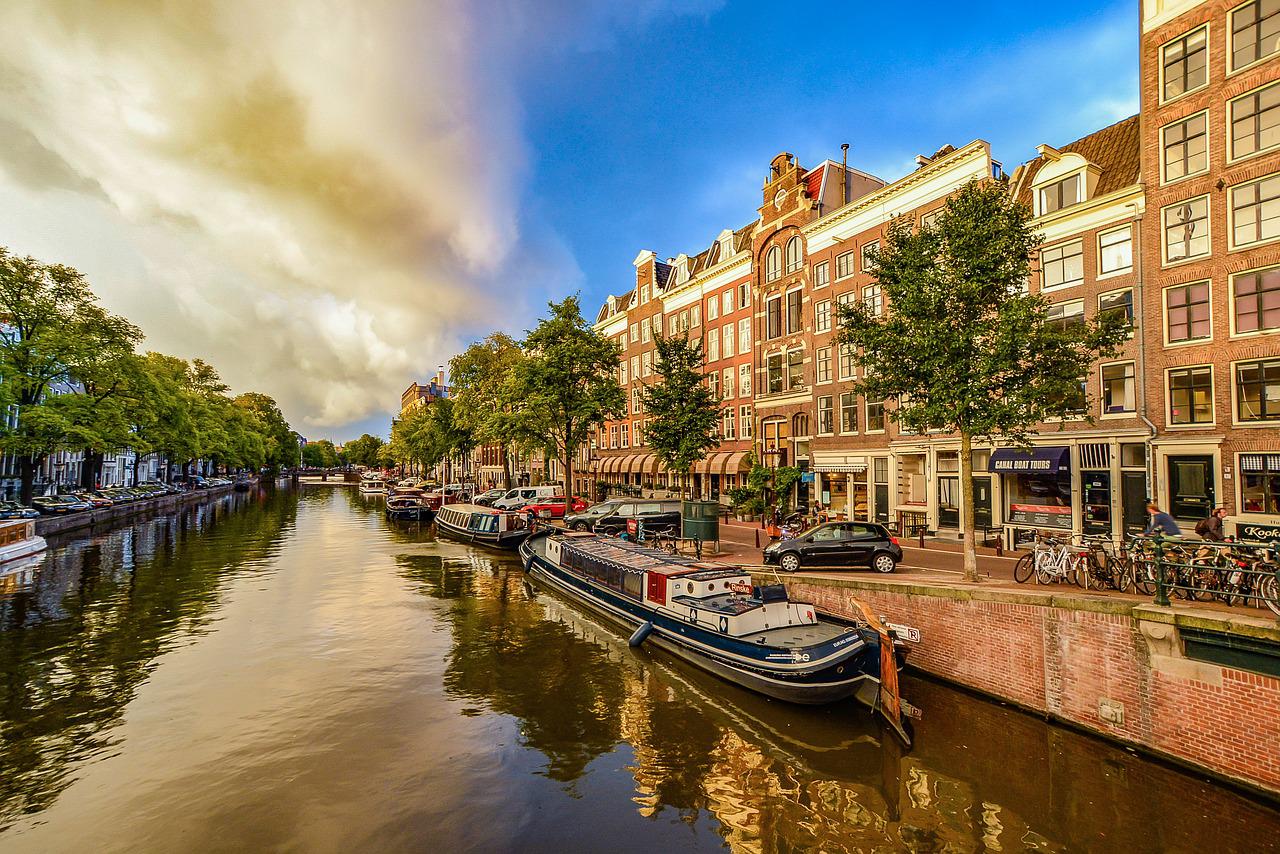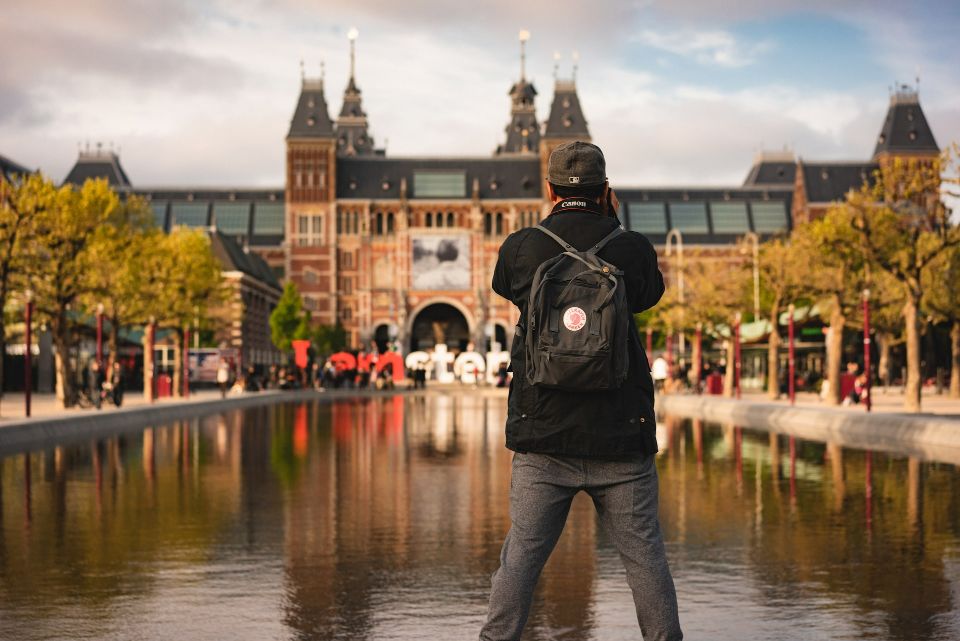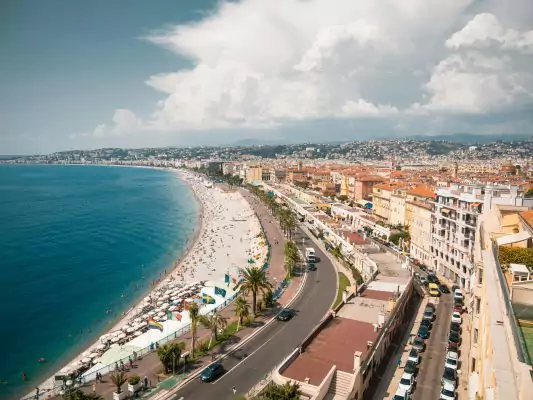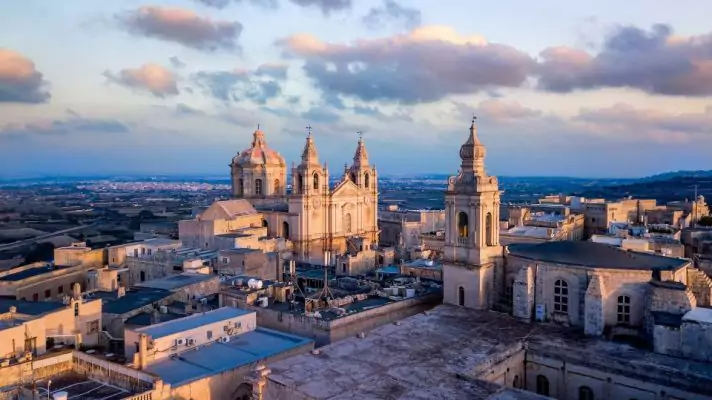10 best free things to do in Amsterdam

A small compilation of Amsterdam’s free tourist attractions and free places to visit to help you keep your budget under control when visiting the Dutch capital. Find out what are the 10 best free things to do in Amsterdam.
Known as one of the most picturesque and photogenic cities in the world, Amsterdam is a destination that captures the imagination of many. With its iconic canals, narrow façades and bustling bicycle lanes, the Dutch capital is truly one of a kind.
However, with its ever-rising popularity comes the challenge of managing an overwhelming number of tourists, which is why the authorities have recognized this issue and are taking measures to combat overtourism. Unfortunately, they seemed to have gone for the easy way out, opting to make the city more expensive by introducing new accommodation taxes and discouraging budget travelers.
But fear not: we’re here to ruin their plans! If you’ve already booked your trip and found a significant portion of your budget disappearing into your accommodation, then we will at least help you pass the time without breaking the bank. Here are 10 fantastic free things you can do in Amsterdam.
10 free things to do in Amsterdam
Take a ferry from GVB Amsterdam

When you visit Amsterdam, one activity that simply cannot be missed is cruising along its endless canals, which stand as city’s most recognizable feature. However, while most canal cruises come with a price tag – often on the higher side – the free, public GVB ferries provide a wonderful alternative, getting you around the city while you soak in the stunning views.
While the GVB ferries don’t cover the famous Canal Belt, where you’ll find the most charming canal houses, they still provide a delightful experience by gliding along the IJ, the historic bay that hugs the heart of Amsterdam.
To hop on one of these ferries, head to the main passenger pier, conveniently located behind Amsterdam Centraal, the city’s central railway station. From there, we highly recommend catching a ferry to the NDSM Wharf, a former shipyard that has been reconverted into a vibrant cultural and alternative hub, featuring markets, festivals, bars and captivating street art.
Begijnhof

Although Amsterdam has a reputation for being quite relaxed, the truth is that it’s quite lively and busy. Sure, the noise and traffic from cars are balanced out by the multitude of bicycles, but the buzz of activity is still present. A pretty fascinating way to escape the crowds and find some tranquility is by exploring the hofjes, charming little courtyards surrounded by historic residential buildings. An old-world version of a mini private condo!
Among the many hofjes scattered throughout Amsterdam, none is as significant or captivating as the Begijnhof. Once a religious complex where women took vows of seclusion – retreating from public life to live in community and embrace chastity – this hofje now offers a serene garden, a rare gem of a church and the oldest house in all of Amsterdam.
Stepping into this peaceful enclave, it’s hard to believe that you’re right in the heart of Amsterdam, just 500 meters away from Dam Square, the bustling main square of the city and a place that seems a world apart in terms of activity and energy.
The Belt Canal

Considered the most stunning and central collection of canals in Amsterdam, the Canal Belt weaves through the historic center, and right along the popular tourist areas of the Dutch capital. In fact, if you search for pictures of Amsterdam’s legendary canals, you’re almost guaranteed to come across captivating images of the belt!
The ring consists of four distinct canals:
- Herengracht – Widely regarded as the most beautiful and prestigious in the city, this canal gained even more recognition as the filming location for the iconic scene in “The Fault in Our Stars”, which propelled Amsterdam to the top of travel bucket lists worldwide;
- Keizersgracht – As the widest canal, it becomes a favorite spot for locals to go ice skating when the temperatures drop and the water freezes. Additionally, it is home to the Homomonument, one of the few memorials honoring the homosexual victims of the Nazi regime.
- Prinsengracht – The longest canal in the Canal Belt, it encompasses numerous attractions, including the renowned Anne Frank House. Furthermore, in a city famous for its narrow houses, this is where you’ll find the narrowest of all!
- Singel – In bygone times, Singel surrounded the (relatively small) medieval city center, before Amsterdam expanded well beyond its boundaries. Nowadays, it is recognized as the canal that passes through the vibrant Red Light District.
Red Light District

Now, a place that needs no introduction. First and foremost, it’s important to understand that the term “Red Light District” refers to any neighborhood – irrespective of the city – where there’s a prominent concentration of brothels, sex shops or other adult-oriented establishments. In fact, Red Light Districts can be found in various cities worldwide, from Hamburg to Bangkok, Paris to Tokyo.
However, the fame of Amsterdam’s De Wallen district has reached such global proportions that the term “Red Light District” automatically became synonymous with this specific neighborhood in Amsterdam. Interestingly enough, adding to its allure, De Wallen happens to be the oldest quarter in the entire Dutch capital… quite fitting, considering its association with the world’s oldest profession!
Beyond its notorious reputation, it’s worth noting that the Red Light District is also an incredibly captivating and picturesque area, where you can witness the shocking and stark contrast between daytime strolls and the transformative atmosphere that emerges after the sun sets.
Rijksmuseum Gardens

While Amsterdam may not boast any renowned free museums of note, there’s a gem of a green space nestled around one of the world’s finest and most famous museums. So, even though entry to the Rijksmuseum requires a fee (and a hefty one for that matter!), its gardens are a delightful oasis that won’t cost you a thing!
Adorned with sculptures, serene ponds and remnants of ancient Dutch monuments, these gardens create a pretty distinct look, with the magnificent façade of the museum serving as a stunning backdrop. Just a stone’s throw away from the gardens lies the Museumplein (Museum Square), home not only to the Rijksmuseum but also other cultural treasures such as the Van Gogh Museum, the Stedelijk Museum or the Concertgebouw concert hall. Plus, it was on this very square where the iconic “I Amsterdam” sign once stood, before its removal in 2018.
If you’re looking for other parks or green spaces in the city that deserve a visit, we highly recommend exploring the Vondelpark, the Rembrandtpark or the Beatrixpark.
Basilica of Saint Nicholas

Right next to the Central Station, the Basilica of Saint Nicholas is probably the most famous religious building in the entire city. What makes it even more fascinating is that this basilica is Catholic, which is quite unique considering the Protestant tradition of the Netherlands. In fact, its construction was a celebration of the revival of Catholicism in the country, following a ban that lasted for three centuries.
However, the Basilica of Saint Nicholas is far from being the only free-to-visit place of worship in Amsterdam! If you’re curious about exploring other faiths practiced in the city, there are several options worth considering, such as the Protestant Newe Kerk or Westerkerk, the Fo Guang Shan Buddhist Temple – located inside the local Chinatown – or even the Portuguese Synagogue, named after the Jewish-Sephardic community that escaped Portugal during the Inquisition. However, the latter’s admission is not free.
Bloemenmarkt

Along with the canals, the windmills and the wooden clogs, flowers are another iconic symbol deeply rooted into the stereotypical folklore of the Netherlands – especially tulips! As such, and although there are several such examples scattered across the city, we recommend making a stop, even if just briefly, at the Bloemenmarkt, Amsterdam’s only floating flower market.
While it’s true that this market has mostly become a tourist hotspot, with the majority of visitors hailing from abroad and souvenir shops sprouting up (pun intended) nearby, it still retains its historical significance, having been established almost 150 years ago. It’s the perfect spot to buy a tulip bulb and bring home a great souvenir of your journey, one that can be planted and bloom in your own garden!
Another market in Amsterdam that deserves your attention, and not exclusively dedicated to flowers, is the Albert Cuyp Markt, known as the largest street market in the Netherlands. It operates six days a week and is a mere 10-minute stroll from the Museumplein.
The Jordaan

Smacked right in the heart of Amsterdam, the vibrant Jordaan district has become an absolute favorite among locals and tourists alike. Originally a working-class neighborhood, the Jordaan has undergone significant gentrification and is now considered one of the most coveted and expensive areas in the country.
As you wander through its charming streets, picturesque bridges and serene canals, you’ll be greeted by a tremendous variety of restaurants, bars, art galleries and adorable little outdoor markets. If you want to get a taste of the commercial Amsterdam that gets portrayed in postcards, then this is the place to be!
While exploring this lively neighborhood, be sure to visit notable attractions such as the Anne Frank House and the vibrant Noordermarkt, a bustling street market much cherished by locals. While you’re at it, you may also admire the majestic Westerkerk – the church where Rembrandt was laid to rest – and ascend its magnificent tower (not free) to enjoy some of the best views the city has to offer!
De 9 Straatjes

Another one of Amsterdam’s most picturesque and charming neighborhoods, De 9 Straatjes stands as a collection of nine streets that wind their way through the four canals of the Canal Belt.
Originally established as a bustling commercial area in the 17th century, these streets still bear names that reflect their historical trades and specialties, specifically related to the bustling fur industry that once thrived there. Hence the reason why you can still walk along “Leather Street”, “Cow Street”, “Wolf Street” or “Bear Street”, each originally dedicated to a specific type of skin/fur.
However, times have changed, and the neighborhood has transformed into a vibrant hub of bars, restaurants, shops and boutiques, all lined up along its narrow, beautiful streets. Rather than simply checking off attractions from your never-ending wish list, De 9 Straatjes is a place to explore aimlessly, soaking in the relaxed atmosphere and discovering hidden gems along the way.
The Windmills of Zaanse Schans

We wrap up our list of free things to do in Amsterdam with a delightful stroll through Zaanse Schans! While this charming village is not technically in Amsterdam proper, but rather in the neighboring city of Zaandam, it’s a mere 22 km away and incredibly easy to reach by train in just under 20 minutes (and the train tickets cost only 3,00€).
Zaanse Schans is famous for its collection of traditional Dutch windmills, one of the country’s most iconic symbols. Truth be told, most of the windmills you’ll see there were transported from various other locations across the Netherlands, with local authorities choosing to turn the area into an open-air museum, carefully recreating the looks of an 18th-century rural village.
As you explore, you’ll encounter over 10 different windmills in Zaanse Schans, as well as countless little shops and themed museums housed inside the village’s traditional buildings. While entry to the museums and windmills may require a fee, you’re welcome to wander the streets and enjoy the landscape without spending a single cent!
Traveling soon? Get your Holafly eSIM with a 5% discount for unlimited internet access in any destination. No more worrying about roaming charges or finding local SIM cards. Enjoy unlimited data and stay connected with ease. Order your Holafly eSIM now »
Heymondo offers a wide range of travel assistance insurance policies. They combine the best quality, service and price with various levels of coverage, so you’re covered on your weekend getaways and long trips. Click here to get 5% off on your travel insurance »












